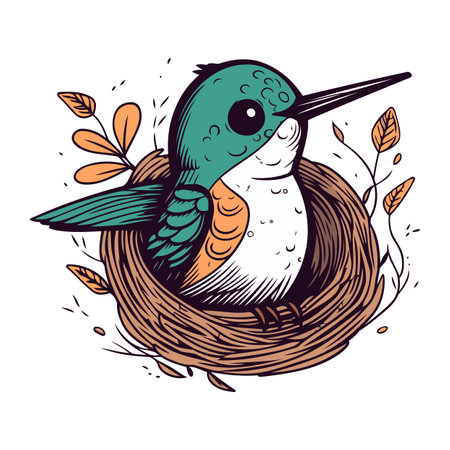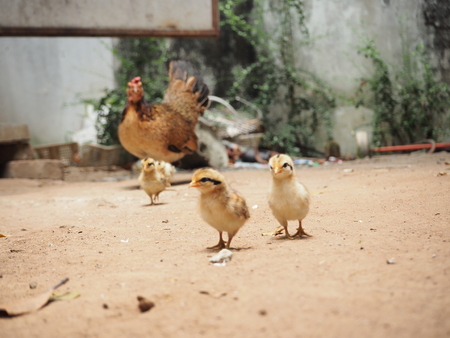Introduction to Environmental Enrichment
Environmental enrichment is a crucial component in the care and wellbeing of birds, especially within domestic and aviary settings across the UK. It refers to a range of strategies and modifications designed to enhance the quality of life for captive birds by stimulating their natural behaviours and reducing the risk of stress-related illnesses. In British homes and aviaries, where space and environmental variability may be limited compared to wild habitats, enrichment becomes even more important. The goal is to create a dynamic environment that mimics natural stimuli, encouraging healthy activity, mental engagement, and social interaction. Proper enrichment not only addresses physical needs but also supports psychological health, helping to prevent issues such as feather plucking, aggression, and depression that can arise from boredom or stress. The table below provides an overview of key enrichment types commonly used in UK avian care:
| Enrichment Type | Description | Examples in UK Settings |
|---|---|---|
| Physical Enrichment | Objects or structures that encourage movement and exercise | Perches, swings, ladders, climbing ropes |
| Sensory Enrichment | Stimuli that engage the senses (sight, sound, touch) | Naturally textured branches, mirrors, bird-safe music/radio |
| Food-based Enrichment | Opportunities to forage or solve puzzles for food rewards | Foraging trays, treat balls, hiding seeds in shredded paper |
| Social Enrichment | Interactions with other birds or humans | Cohabitation with compatible species, supervised playtime with owners |
This holistic approach ensures that birds kept in British households or community aviaries have their welfare needs met in ways that are both practical and culturally appropriate for local aviculturists.
2. Understanding Stress-Related Illnesses in Birds
Stress is a significant concern for pet and aviary birds, especially those commonly kept in British homes such as budgerigars, canaries, cockatiels, and African grey parrots. When exposed to stressful environments—be it due to inadequate space, lack of stimulation, or sudden changes in routine—birds are prone to develop a range of stress-induced health problems. Recognising these illnesses early is crucial for maintaining avian wellbeing.
Common Stress-Induced Health Problems
Birds manifest stress through both behavioural and physical symptoms. The table below outlines some typical stress-related illnesses, along with examples pertinent to species popular in the UK:
| Illness | Symptoms | Affected Species (Common in Britain) |
|---|---|---|
| Feather Plucking | Excessive grooming, bald patches | African Grey Parrot, Cockatiel |
| Psittacine Beak and Feather Disease (PBFD) | Feather loss, beak deformities | Budgerigar, Cockatoo |
| Respiratory Issues | Sneezing, laboured breathing | Canary, Budgerigar |
| Stereotypic Behaviour | Pacing, repetitive movements | Cockatiel, Lovebird |
Species-Specific Examples
For instance, budgerigars often develop respiratory issues when their environment lacks proper ventilation or is overly dusty—a common challenge during British winters when windows are seldom opened. Similarly, African grey parrots are notorious for feather plucking if deprived of mental stimulation or social interaction. Canaries may become lethargic and lose their song under chronic stress conditions.
The Importance of Early Detection
Early identification of these stress indicators allows bird keepers to intervene before minor behavioural changes escalate into chronic health issues. This highlights why understanding the specific needs of each bird species and providing suitable enrichment tailored to their natural behaviours is vital for avian health in the British context.

3. Key Elements of Effective Environmental Enrichment
Creating an environment that meets the behavioural and psychological needs of birds is fundamental in preventing stress-related illnesses. In the UK, enrichment strategies must be both practical for keepers and reflective of local welfare standards. The following key elements should be considered when designing an effective enrichment plan:
Physical Stimulation
Providing opportunities for birds to exercise natural behaviours such as flying, climbing, and foraging is essential. Aviaries should offer perches at various heights, swings, and safe foliage to mimic wild environments. The use of puzzle feeders encourages physical activity and mental engagement, reducing boredom and stereotypic behaviours.
Sensory Stimulation
Birds rely heavily on their senses to interpret the world. Incorporating a variety of sensory stimuli—such as different textures, colours, and sounds—can greatly enhance their living environment. For example, introducing native UK plant species or playing natural sound recordings can enrich sensory experiences while aligning with local biodiversity.
Social Interaction
Many bird species are highly social and benefit from regular interaction with conspecifics or keepers. Group housing or visual access to other birds helps prevent loneliness, while scheduled handling sessions can strengthen the human-animal bond when appropriate. It is important to consider compatibility and avoid overcrowding to minimise aggression.
Comparison of Enrichment Strategies by Category
| Enrichment Type | Examples (UK Context) | Benefits |
|---|---|---|
| Physical | Multi-level perching, native branches, puzzle feeders | Promotes exercise; reduces obesity and stereotypies |
| Sensory | Native plants, variable lighting, UK woodland sounds | Stimulates curiosity; alleviates stress responses |
| Social | Compatible flocking, supervised human interaction | Prevents isolation; encourages natural behaviours |
Practical Considerations for UK Keepers
UK-specific factors such as climate, available native materials, and legal guidelines (including DEFRA recommendations) must be integrated into enrichment planning. Regular rotation of enrichment items maintains novelty and effectiveness while adhering to hygiene protocols. Ultimately, a balanced approach addressing physical, sensory, and social needs will provide robust protection against stress-induced health issues in birds.
4. Practical Approaches for Bird Owners in the UK
Incorporating environmental enrichment into your daily birdkeeping routine is essential for preventing stress-related illnesses in birds. British bird owners have access to a variety of locally available materials and practices that can make a significant difference to avian welfare. Here are some actionable strategies to create a stimulating, healthy environment for your feathered companions.
Choosing Suitable Enrichment Materials
When selecting enrichment items, opt for natural, safe, and easily obtainable resources found across the UK. Many everyday objects can be repurposed to provide engaging experiences for your birds.
| Enrichment Item | Description | Where to Source in the UK |
|---|---|---|
| Willow Branches | Chewable and good for climbing; promotes natural behaviours | Local parks, garden centres (ensure pesticide-free) |
| Apple or Hazel Sticks | Safe wood for gnawing; helps keep beaks trimmed | Home gardens, local green grocers |
| Pine Cones | Stimulates foraging instincts when filled with treats | Parks, woodland walks (clean thoroughly before use) |
| Paper/Cardboard Tubes | Shreddable and ideal for hiding food or nesting material | Recycled household goods (toilet/kitchen roll tubes) |
| British Herbs (e.g., parsley, dandelion) | Aromatic and edible; encourages exploration and nibbling | Supermarkets, allotments, gardens |
Integrating Enrichment into Daily Routines
A consistent schedule benefits both you and your birds. Use these practical steps to ensure enrichment is part of everyday care:
- Foraging Opportunities: Hide seeds or fresh vegetables inside paper parcels or pine cones each morning.
- Toy Rotation: Switch out toys weekly using different textures and shapes to maintain interest.
- Natural Perches: Replace standard perches with clean, pesticide-free branches from native trees like willow or hazel.
- Mental Challenges: Introduce puzzle feeders made from cardboard boxes to encourage problem-solving.
- Bathing Options: Offer shallow dishes or mist sprays with room-temperature water for bathing sessions, especially during warmer months.
The Importance of Social Interaction
If you keep more than one bird, allow supervised out-of-cage time together in a safe room. Solo birds benefit from regular human interaction—talking softly, training simple commands, and offering gentle handling all help reduce stress levels.
Cultural Considerations in British Birdkeeping
Bespoke aviaries or outdoor flights are popular across the UK due to temperate weather. Ensure aviaries are predator-proof and enriched with plenty of foliage, swings, and platforms. Always check that plants added are non-toxic to British avifauna.
By combining these practical approaches with awareness of local resources and traditional British birdkeeping customs, you can create an environment where your birds flourish both physically and emotionally. Environmental enrichment is not just a luxury—it’s a necessity for long-term avian health.
5. Recognising and Monitoring Bird Wellbeing
Effective environmental enrichment is only valuable if you can observe its positive effects on your birds. In the UK, where native bird species have distinct behaviours and stress responses, recognising signs of wellbeing is essential for both pet owners and wildlife carers. Here’s practical advice on how to observe, interpret, and track improvements in British birds’ health as a result of enrichment strategies.
Key Signs of Reduced Stress and Improved Health
| Sign | Description | Typical British Species Example |
|---|---|---|
| Active Foraging | Birds spend more time searching for food or interacting with feeders and natural materials. | Blue Tit, Robin |
| Vocalisation | Increase in singing or calling, especially during daylight hours. | Blackbird, Chaffinch |
| Preening | Regular grooming indicates comfort and a lack of distress. | Wood Pigeon, Starling |
| Sociability | Willingness to interact with other birds or humans. | Sparrow, Goldfinch |
| Normal Feeding Patterns | No sudden changes in appetite or feeding times. | Great Tit, Dunnock |
| Lack of Stereotypies | No repetitive, purposeless behaviours like pacing or feather plucking. | Cage birds (Budgerigar), Aviary residents |
Observation Techniques for Bird Keepers in the UK
- Set Routine Observations: Check birds at the same time each day to spot subtle behavioural changes.
- Use Simple Tracking Tools: Maintain a daily log or use free apps tailored for bird observations. Note activities such as feeding, preening, and social interactions.
- Create an Enrichment Checklist: List all enrichment items used (natural branches, mirrors, puzzle feeders) and record which are most engaged with by different species.
Interpreting Behavioural Changes Correctly
If you notice an increase in natural behaviours like singing or curiosity towards new objects, this often indicates reduced stress. Conversely, watch out for warning signs such as withdrawn behaviour, aggression, or physical symptoms like weight loss or feather damage. Early identification enables timely adjustments to enrichment routines.
A Practical Example: The Urban Garden Robin
If you provide a variety of perches and mealworm feeders in your London garden, monitor the robin’s willingness to approach these areas. Increased activity near enrichment items and regular visits throughout the day suggest the environment is supporting the bird’s wellbeing. Record these observations weekly to track progress over time.
6. Conclusion and Future Perspectives
In summary, environmental enrichment is a cornerstone of avian welfare, especially in preventing stress-related illnesses among birds in the UK. By incorporating physical, sensory, social, and cognitive stimulation into their daily routines, bird owners and carers can significantly reduce the risk of behavioural and health problems. Key takeaways from this article are outlined below:
| Key Point | Practical Example (UK Context) |
|---|---|
| Diverse Enrichment Types | Use foraging toys with native seeds; offer locally sourced willow branches for perching |
| Routine Changes | Rotate toys and perches every fortnight to maintain novelty and interest |
| Social Interaction | Arrange supervised group flights or introduce mirrors for solo birds when appropriate |
| Cognitive Challenges | Provide puzzle feeders or training sessions using UK-based reward cues (e.g., millet sprays) |
Looking forward, further innovations in avian enrichment are expected to focus on more personalised and technology-driven solutions. For example, smart feeders that track feeding patterns, automated interactive toys, and virtual reality environments tailored to British bird species may soon become mainstream. Moreover, ongoing research by UK universities and wildlife organisations continues to shed light on species-specific enrichment needs, making it easier for both pet owners and professional keepers to provide optimal care. By staying informed about these advancements and being proactive in implementing new enrichment strategies, we can ensure a healthier and happier future for birds across the United Kingdom.


